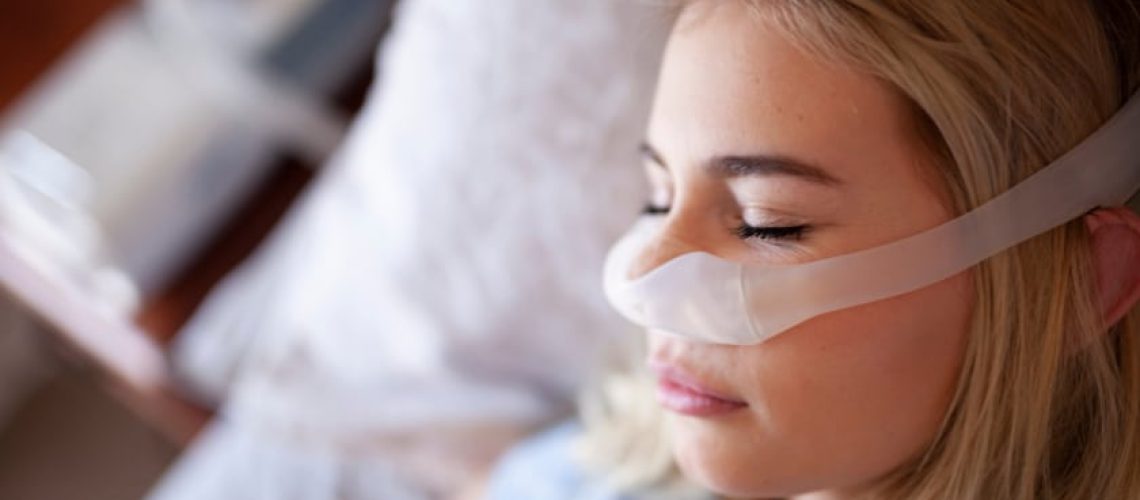Sleep apnea is a severe condition that affects millions of people each year. So if you’re worried about your sleeping patterns or suspect you may have this condition, read on to find out more! In this article, we’ll be looking at what exactly sleep apnea is, the signs and symptoms to look out for, and how it can be treated.
Sleep Apnea
Sleep apnea is a condition that causes your breathing to stop or become very shallow while you are asleep. It can happen several times throughout the night and cause you to snore loudly. If you have sleep apnea, you may not be getting enough oxygen when you sleep, which can lead to health problems such as high blood pressure, heart disease, strokes, and diabetes.
What Causes Sleep Apnea?
There are three main types of sleep apnea: obstructive, central, and mixed. Obstructive sleep apnea is the most common type. It occurs when your throat muscles intermittently relax and block your airway during sleep. Central sleep apnea is caused by a problem with your brain signals that control your breathing muscles. Mixed sleep apnea is a combination of both obstructive and central sleep apnea.
Certain factors can increase your risk of developing sleep apnea, including:
- Being overweight or obese
- Having a large neck circumference
- Having large tonsils or a large tongue
- Having a small jawbone
- Smoking
- Drinking alcohol excessively
- Use of certain sedatives or tranquilizers
Symptoms of Sleep Apnea
There are three types of sleep apnea: obstructive, central, and mixed. Obstructive sleep apnea, the most common type, occurs when your throat muscles intermittently relax and block your airway during sleep. Central sleep apnea occurs when your brain doesn’t send proper signals to the muscles that control your breathing. Mixed sleep apnea is a combination of both obstructive and central sleep apnea. Common sleep apnea symptoms include loud snoring, gasping for air during sleep, morning headaches, insomnia, daytime fatigue, irritability, and concentration and memory problems. If you have any of these symptoms, talk to your doctor. Sleep apnea can be diagnosed with a physical exam, medical history review, and a polysomnogram (PSG) or home sleep test.
Diagnosis and Treatment Options
There are three main types of sleep apnea: obstructive, central, and mixed. Obstructive sleep apnea is the most common type. It occurs when your airway becomes blocked or narrowed during sleep. Central sleep apnea is less common and occurs when your brain doesn’t signal your muscles to breathe. Mixed sleep apnea is a combination of both obstructive and central sleep apnea. A diagnosis of sleep apnea usually starts with a physical exam and a medical history. Your doctor may also recommend a sleep study to confirm the diagnosis. A sleep study can be done in a hospital or at home. During a sleep study, you’ll be monitored overnight while you sleep. The sleep study results will help your doctor determine your best treatment. Treatment options for sleep apnea include lifestyle changes, mouthpieces, surgery, and breathing devices. Lifestyle changes such as losing weight, avoiding alcohol, and quitting smoking can help reduce the severity of sleep apnea. Breathing devices such as CPAP (continuous positive airway pressure) machines can also help treat sleep apnea by keeping your airway open while you sleep. Mouthpieces can help keep your airway open while you sleep. Surgery may be an option if other treatments haven’t worked or aren’t suitable for you.
How Can You Reduce the Risk of Sleep Apnea?
-Lose weight if you are overweight. This is the most effective way to reduce your risk.
-Avoid alcohol and sedatives before bed. These can relax the muscles in your throat and make it more likely for them to collapse during sleep.
-Sleep on your side or stomach. This position prevents your tongue and soft palate from blocking your airway.
-Use a humidifier. Dry air can irritate the membranes in your nose and throat, making them more likely to swell and block your airway.
Home Remedies for Treating Sleep Apnea
Sleep apnea is a condition that causes pauses in breathing or shallow breaths while you sleep. It can disrupt your sleep and cause daytime fatigue. There are three types of sleep apnea: obstructive, central, and mixed. Obstructive sleep apnea is the most common type and is caused by an airway blockage. Central sleep apnea is caused by a problem with the brain signals that control breathing. Mixed sleep apnea is a combination of both obstructive and central sleep apnea.
Conclusion
Sleep apnea is a serious medical condition that can drastically affect your overall health and well-being. With proper diagnosis and treatment, you can take steps to help alleviate your sleep apnea symptoms and improve your quality of life. Recognizing the signs of sleep apnea and the treatment options available is essential. Talk to your doctor about possible treatments today if you suffer from sleep apnea.
FAQ
What are the symptoms of sleep apnea?
Symptoms of sleep apnea include:
* loud snoring
* frequent waking up during the night
* feeling tired during the day despite sleeping enough hours each night

